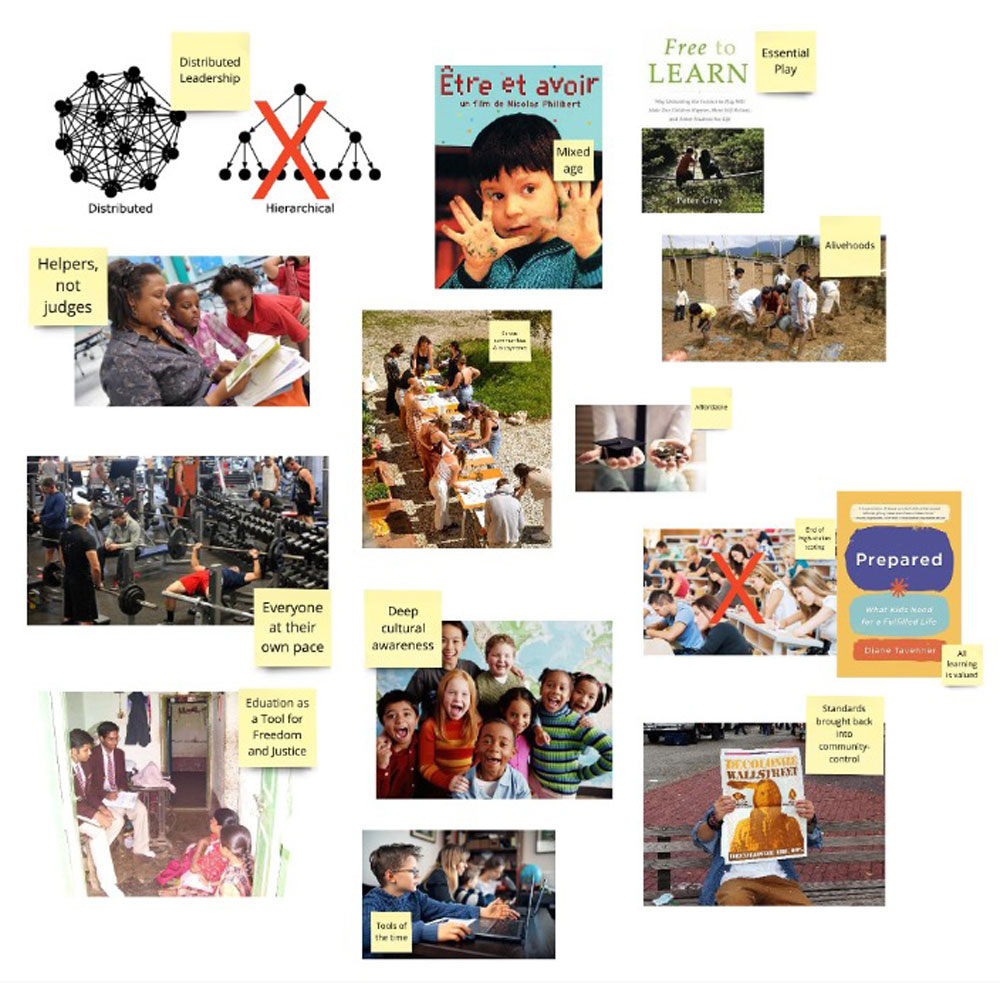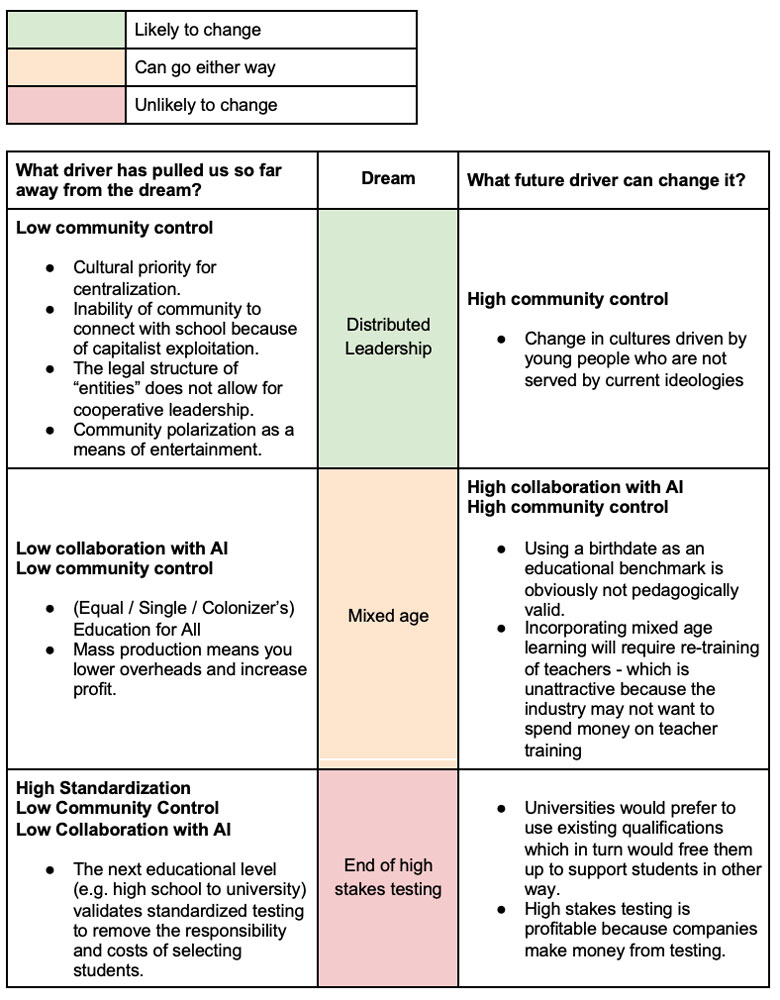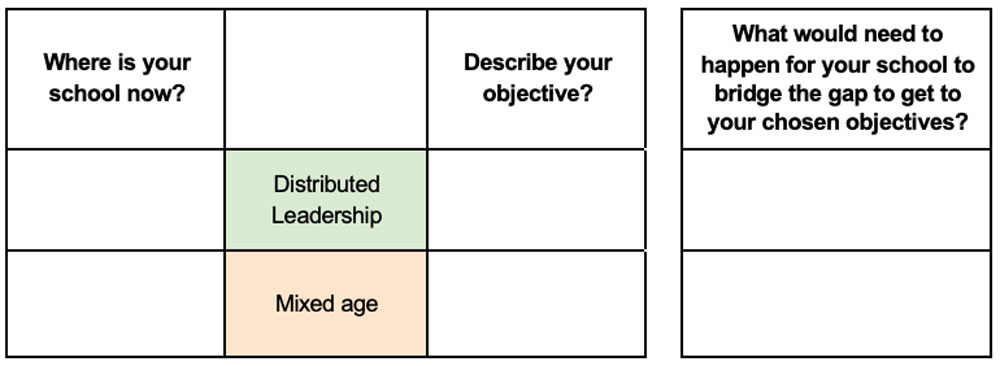
Welcome to Part Three of our series on reimagining education for a dynamic future. Building upon the foundational work in Part One: Roadmap to Action and the future scenarios outlined in Part Two: Roadmap To Creating Future Scenarios, this part focuses on analyzing the impact of key drivers on our educational aspirations and crafting a feasible roadmap for transformative educational change. Our goal is to provide a practical tool that can bridge the gap between our dreams and the realities of educational reform.

(Photo source: Jaya Ramchandani and Cary Reid)
Activity 1: Analyzing the Dream and Drivers
In this activity, participants analyze the relationship between their educational aspirations (the dream) and the various influencing factors or drivers identified at the end of Roadmap to Creating Future Scenarios.
Participants categorize the drivers into three likelihood categories:
They will then describe the influence of these drivers and predict how changes in these drivers could bring the educational system closer to or further from the envisioned dream. Here, we distinguish between what is achievable and what remains beyond our current scope of influence. It's a critical acknowledgment that while some desired changes are within reach, others may not be feasible or viable at this time. This approach ensures a balanced perspective between idealism and practicality in our pursuit of educational reform.
Continuing with our example presented in Roadmap to Creating Future Scenarios:
Step 1. Revisit your aspirational vision for education.
 (Photo source: Jaya Ramchandani and Cary Reid)
(Photo source: Jaya Ramchandani and Cary Reid) Step 2. Select the drivers of focus.
Step 3. Assess how these drivers currently influence the dream and explore how the likelihood of future changes might align the educational system closer to this vision.
We have analyzed three of the desires in the dream for illustration:
 (Photo source: Jaya Ramchandani and Cary Reid)
(Photo source: Jaya Ramchandani and Cary Reid) By analyzing how different drivers impact the dream, we understand how the likelihood of change in various drivers helps in grounding the dream in reality, ensuring that future strategies are both ambitious and achievable.
Activity 2: Setting Objectives and Developing Strategies
This activity involves using your current state and potential future states to set realistic objectives and strategies. It answers four key questions:
Step 1. Use the green (likely to change) and orange (can go either way) aspects from your analysis to describe where you currently stand in those aspects.
Step 2: Research and experiment with models that match or are close to your dream. Reach out to your networks or conferences on reimagining the future of education for inspiration.
Step 3: Finally, describe your objectives.
Presented below is a frame for you to analyze how changes in these aspects would work in your context.
 (Photo source: Jaya Ramchandani and Cary Reid)
(Photo source: Jaya Ramchandani and Cary Reid)
--------------------------------------------------------------
Jaya Ramchandani is a Liberia-born, India-raised, international educator. She started her career in publishing, helping non-native English speakers from Asia publish in top-tier science journals. She then worked in astronomy outreach and organized a number of informal learning projects, the most ambitious of which was India’s first art-science festival. Moving into formal education, she spent the last few years teaching International Baccalaureate Diploma Program Physics at United World College ISAK in Japan and the United Nations International School in New York, where she currently lives and works as an education consultant and learning experience designer.
LinkedIn: linkedin.com/in/jayar
Cary Reid is a Jamaican educator who has spent the last decade creating alternative systems for schools so that they can support more types of students. He has tried this at high schools and universities in Jamaica, India, Hong Kong, Japan, and Norway. He has also worked on system design in public health, peacekeeping, and diplomacy.
LinkedIn: linkedin.com/in/caryreid